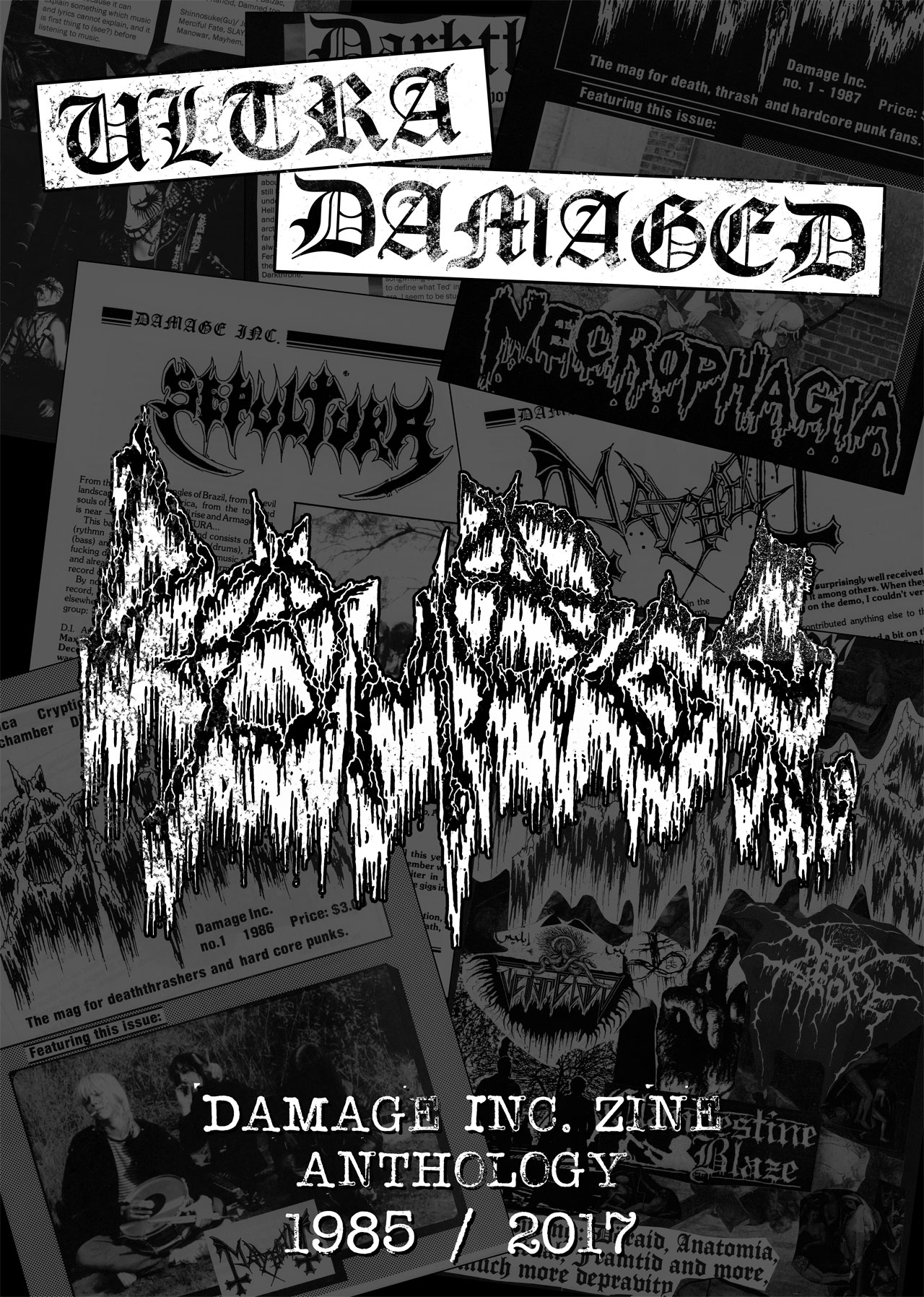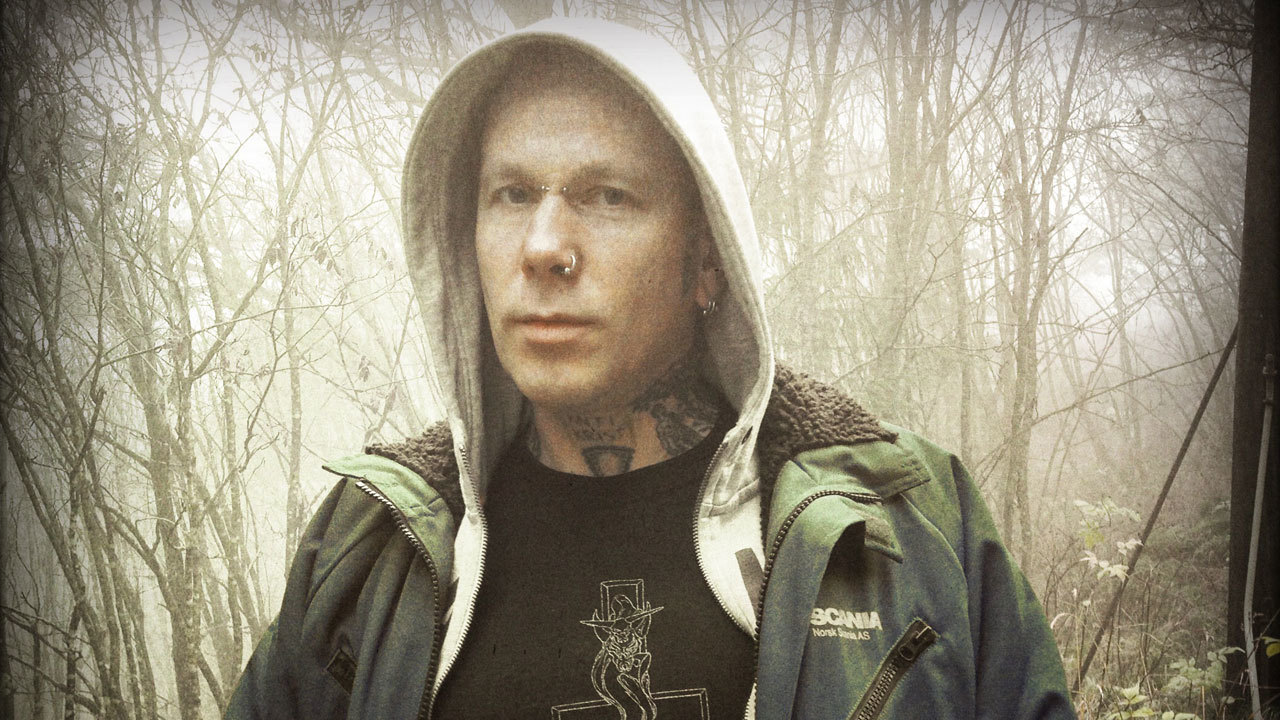As much as tape trading was integral to the founding of the underground metal scene – not just in terms of getting the music spread across the world, but also in a set of values whereby actively seeking music out instilled a deeper attachment – there was another form of back-channel correspondence that proved equally important: fanzines.
Long before established music magazines had cottoned on to the ravenous new forms crawling out of the primordial soup where thrash, death and the diabolical diatribes of Venom and Bathory simmered, a number of cut’n’paste warriors were already documenting a new breed of bands that would go on to define the underground for decades to come.
Slayer the fanzine written by Jon Kristian, aka Metallion, came to define what became Norway’s black metal scene as much as the bands themselves, but he wasn’t alone. As well as the Isten fanzine, another tome was rooting out bands in their formative stages and taking an equally anarchic approach. Put together by Sven-Erik Kristiansen, aka Maniac, Damage Inc was digging up bands like Mayhem (who he later went on to join as frontman), Voivod and Necrophagia, conducting crazy interviews where hindsight and reflection were alien concepts, but channelling the wild energy of a scene in its turbulent early throes.
A riposte to the internet age, Damage Inc has been resurrected once more, and thanks to Hammer scribe Dayal Patterson’s Cult Never Dies imprint, it’s being republished alongside Maniac’s early fanzines as Ultra Damaged. We spoke to Maniac himself about the early daze, the woeful ways of online warriors and the state of the underground today…
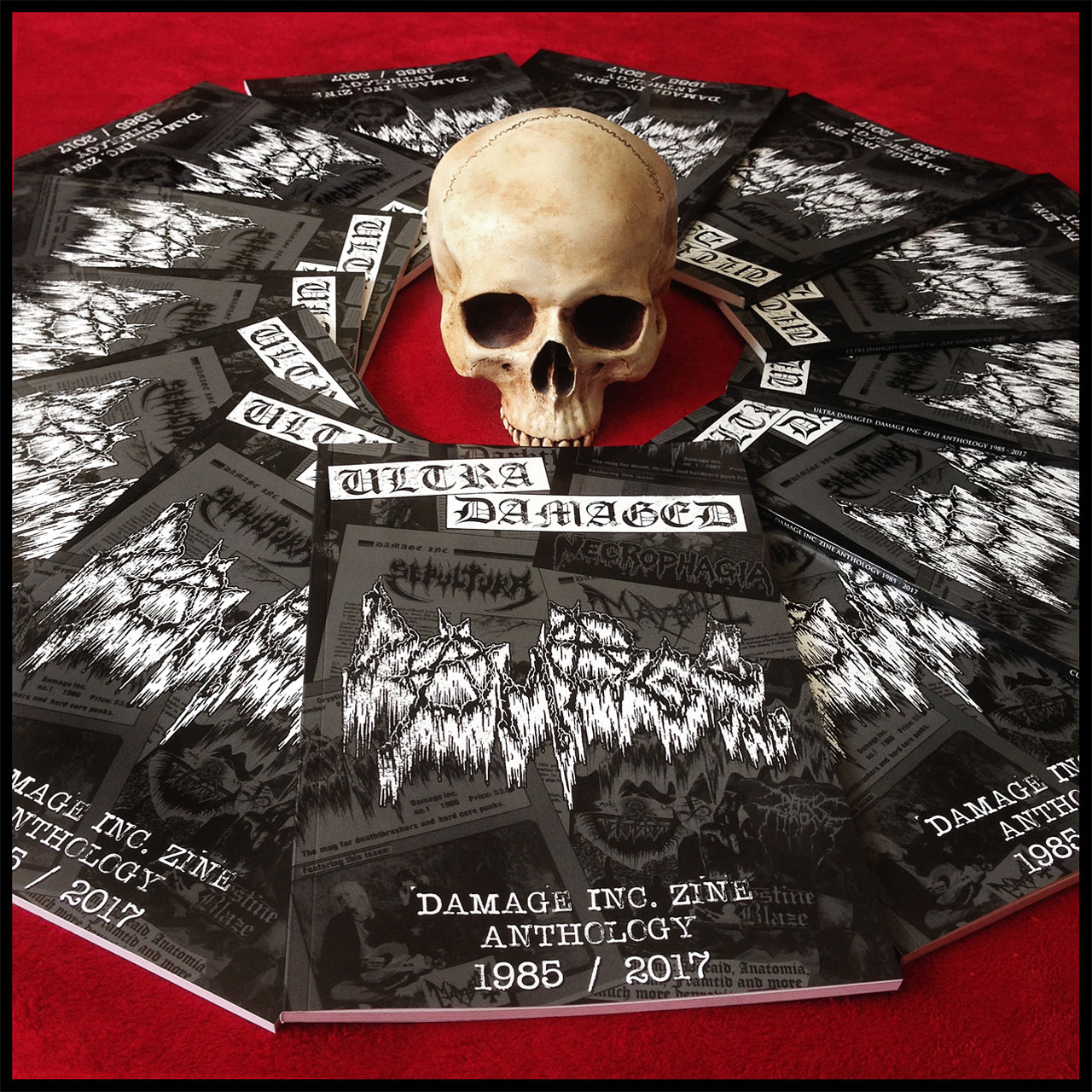
Back when you were doing your first issues of Damage Inc, the underground hadn’t yet split into different subgenres with different sets of rules. Did that give the music of the time a sense of freedom it doesn’t have now?
MANIAC: “It certainly had freedom. Freedom as in ‘Let’s try to put this kinda riff together with that kinda riff and find out what happens…’ and then ‘Let’s make it even a bit more extreme than that…’. ‘And let’s call it blackened death thrash evil something and just see where the road leads us….” I think ‘extreme’ was the key word in most of the underground at the time, – let’s push the limits and do what we want. In terms of riffs, lyrics, rhythm, you name it. Today it’s more restrained and I also feel like a lot of the more experimental bands today in certain genres, let’s say black metal, just experiment to feel special. Back in the days when you found the formula you struck gold. It’s more like a cry for help these days. ‘Please, where can we go now?’. Do you really have to go anywhere?”
How has it been looking back on those first issues of Damage Inc? Have you seen new aspects in it you weren’t aware of at the time? Did you expect bands like Voivod to be still going and still be pushing boundaries 30 years later?
“They’re very youthful, the old zines. No misanthropy to speak of. And I can still feel the exuberant energy within these pages and those years. As for where bands are today, I didn’t really think about that kind of stuff. 40-year-old people were fucking old and oh so gloriously far away. On the other hand Voivod were so special already so they might be one of the bands you actually could imagine growing old with grace. The rest would just impeccably go up in flames before 30.”
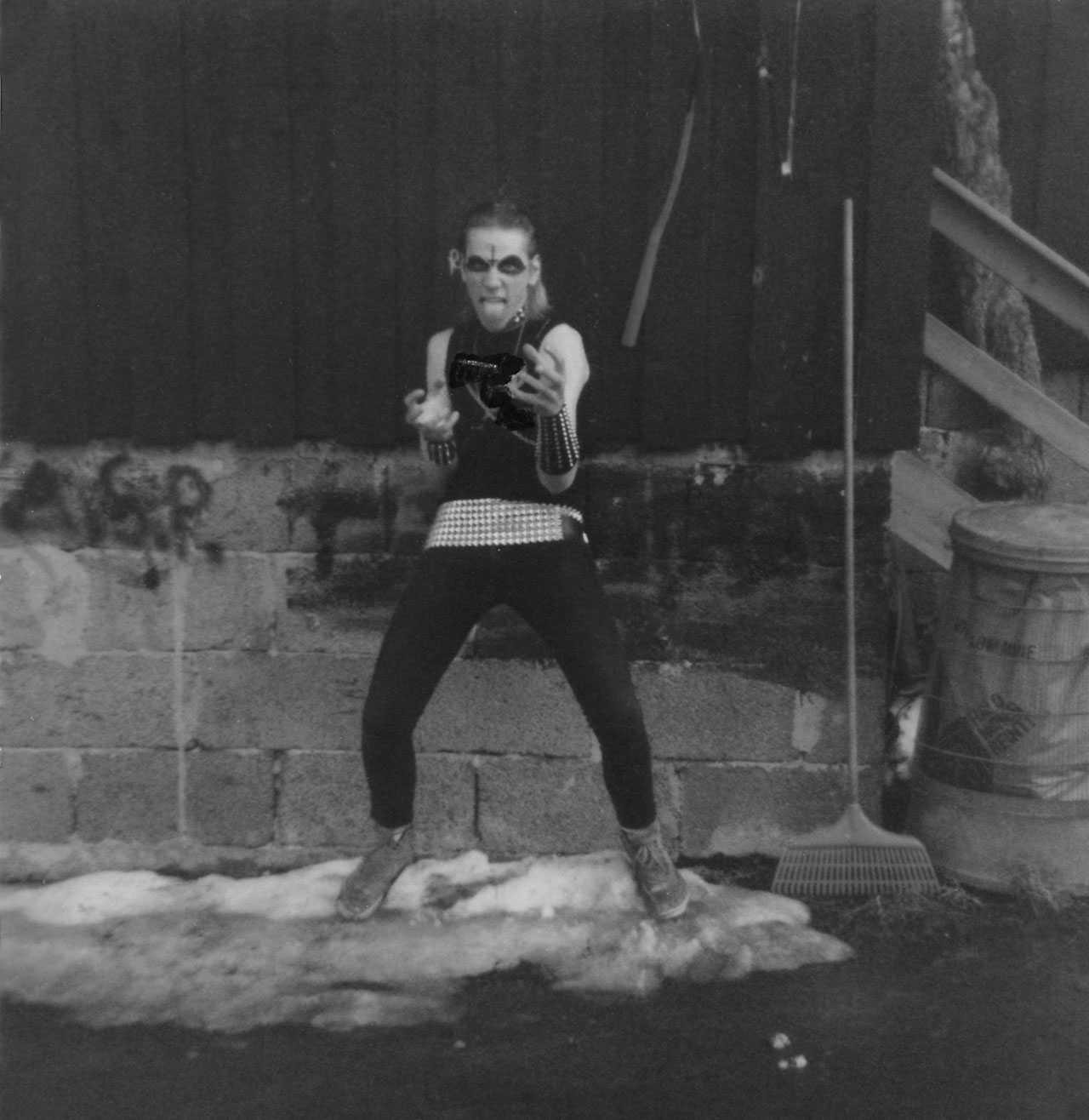
The first issue you put Mayhem on the cover, by the time of the second issue you were fronting the band. Did that give you any kind of different perspective for Damage Inc?
“Not really, my aim was still the same – to present the bands I loved to other people who might share the same kind of deep affection for what was going on in the underground music scene. On all levels we wanted to push boundaries and no way in hell were bigger glossier magazines going to write about us, so we just had to do it ourselves from the written word to the music itself.”
Fanzines like Slayer and Damage Incweren’t critical assessments of the underground scene, it felt like they were part of the scene itself. How much do you think that was the case and what effect do you think both fanzines had on that scene?
“We were very much part of the underground scene. We were friends, writers and musicians together on a crusade for the music we truly loved. I think a lot of people discovered more extreme music from reading our zines, and especially from Slayer mag which never really stopped. And a lot of people who read our zines would later became very prominent figures in the black metal scene – not that that was because they read the zines, but partly so, because it showed kids you can do what the fuck you want as long as you put your heart in it, and blood, heheh!”
You weren’t dealing with PRs to get hold of bands, back then you had to seek them out personally, and getting hold of music took a lot more effort, and waiting too. Does that affect how people relate to music, as opposed to having Bandcamp and so forth at your fingertips? Are there any benefits to the internet age?
“I’m sure it does affect how people relate to music. At least it seems to me that back in those days you appreciated the bands and their releases much more. I see today that it is so easy to get new music that you hardly have time to truly listen to a release. I don’t know how many copies of Satanic Rites I wore out. To put it this way; I know it by heart. It’s a kind of information overload where it’s truly difficult to find the gems and maybe you miss a lot of gems from just not giving it enough spins. I notice even myself that I miss out on quite a lot of stuff. Some of it I have fortunately been able to find my way back too, but it’s information overload. There’s a lot of benefits of course. The ease of getting in touch with people, the ease of working on musical projects with people in different countries. Sure, there’s lot of good stuff, but it’s hard to avoid the reek of putrefaction too.”
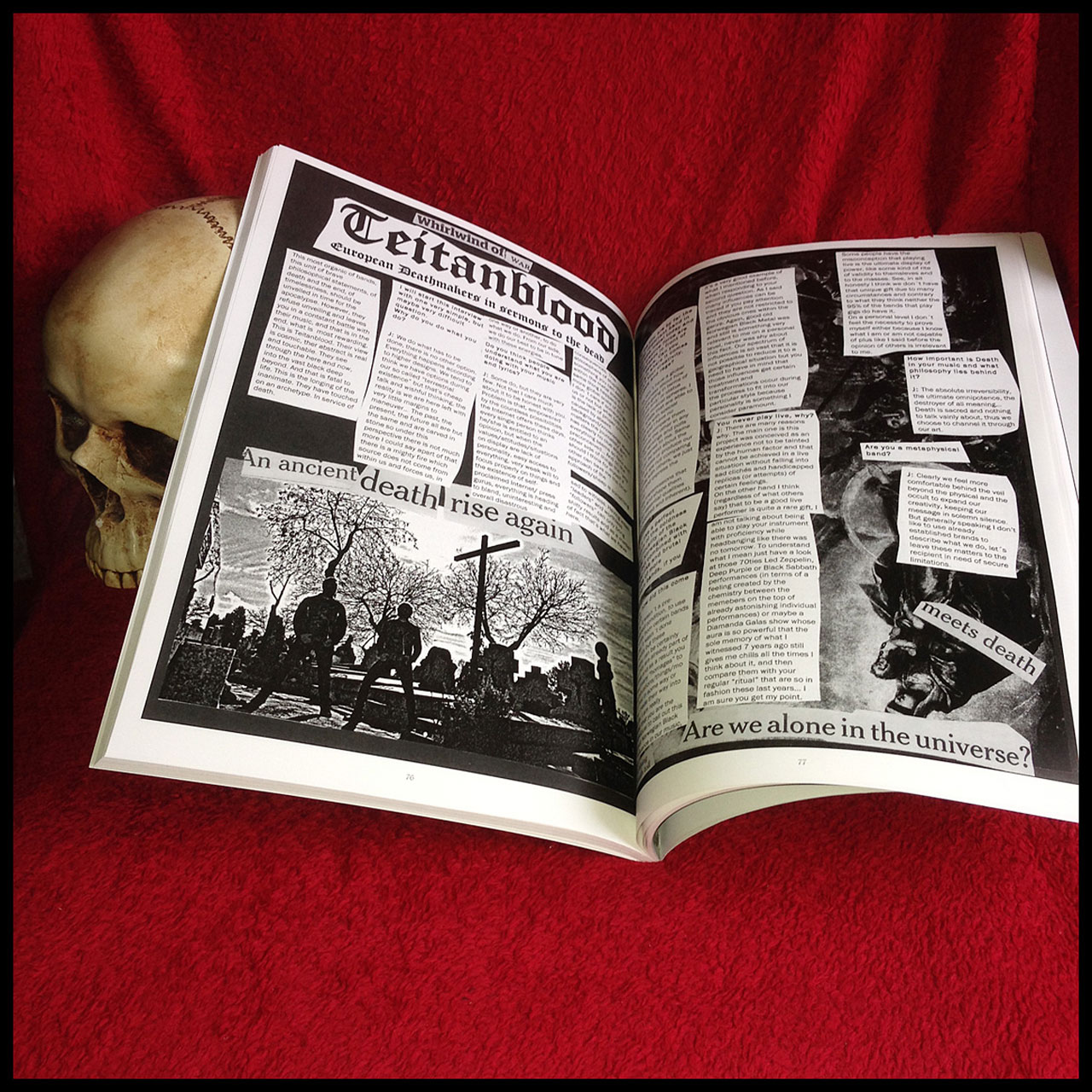
The interviews in those first issues are pretty knockabout and to the point, and it seems like the most important thing you wanted to get across was the attitude of the bands. When did you notice that the punk outlook was starting to change into a more philosophical black metal perspective, and how did you respond to that shift?
“I noticed it in painful details in all the letters from Euronymous. There’s not much more to add to that. So for me from 1991 and onwards there was a huge change and the innocence was dead, literally.”
These days, everyone seems to have an online blog. Why is it important for physical fanzines to exist today?
“It seems some people are still interested in fanzines and not only old geezers. Maybe it applies to people who wants to read about different bands without being disturbed by the turds commenting on the net. Those people should listen to music instead of sharing their diarrhoea with innocent bystanders. You wanted to read about an interesting band and not what some fucking moron felt he had to pour out and infect everyone else with. So fanzines are important for people who want peace from morons.”
Doing Damage Inc now, how much has the scene changed since the original issues, and how much continuity did you find between then and now?
“It has changed very much. I do not longer feel like I am part of the same scene, and of course that scene is forever gone, but it has moved forward and the continuity must be found in the fact that I, who was there back then, and many others like me, are still here doing what we did then. Supporting the bands we love. I am so grateful for all the great bands in the underground today who carry the same torch and there’s many of them out there. It is very different for me today of course. Back then I was a 17-year-old kid interviewing Metallica, today I am 48 years old and sometimes interviewing bands more than half my age. It’s pretty interesting. And the scene is still strong albeit more divided than it was in the beginning. It’s nice to know that anger can still be a trigger and that not everyone has succumbed to that most horrifying of drugs: Facebook.”
Order Ultra Damaged here!
